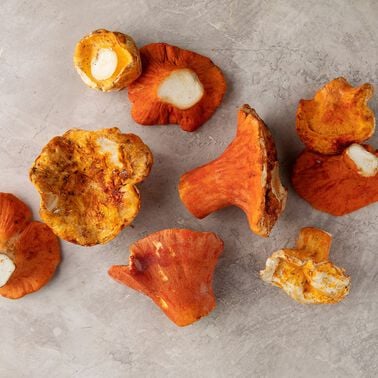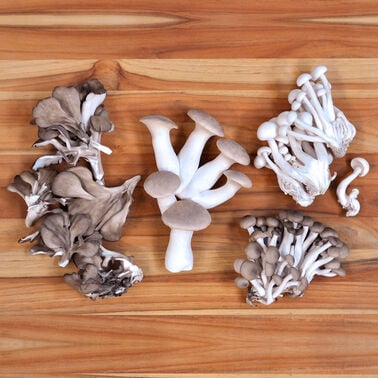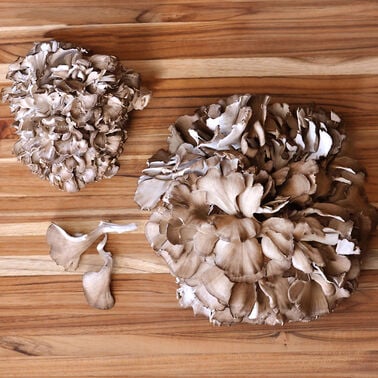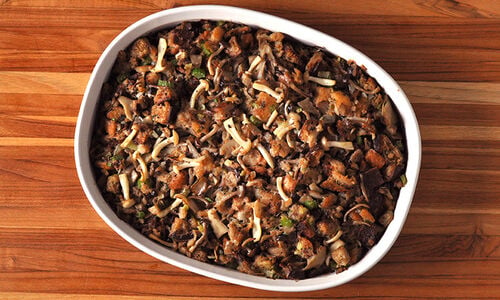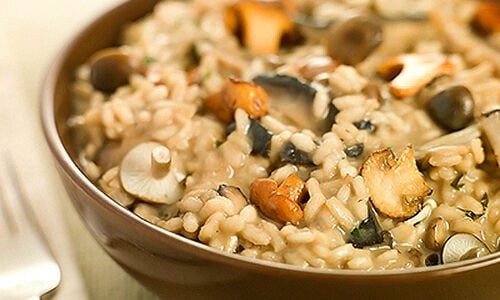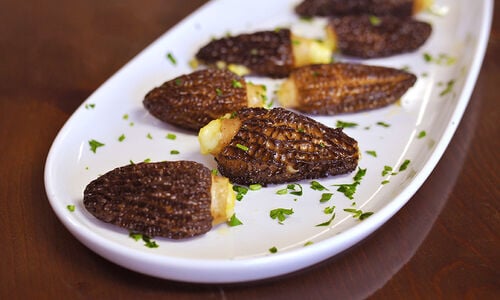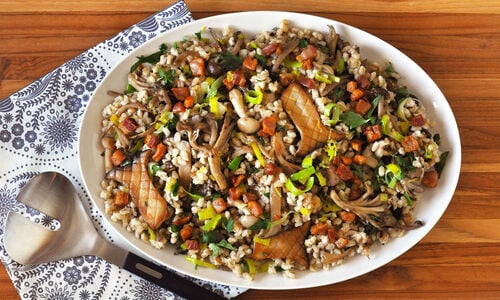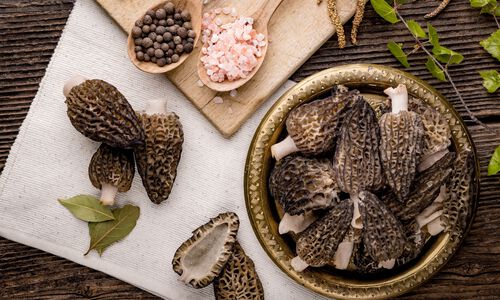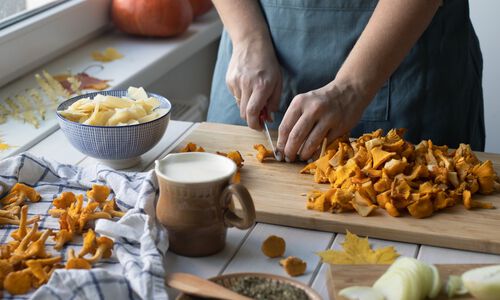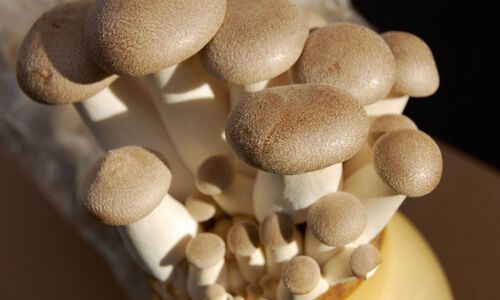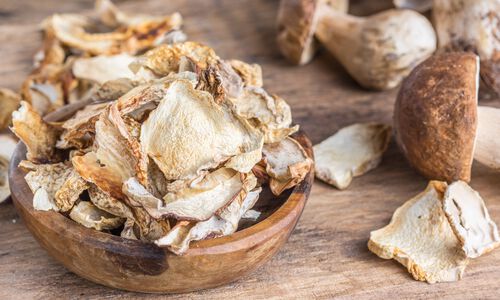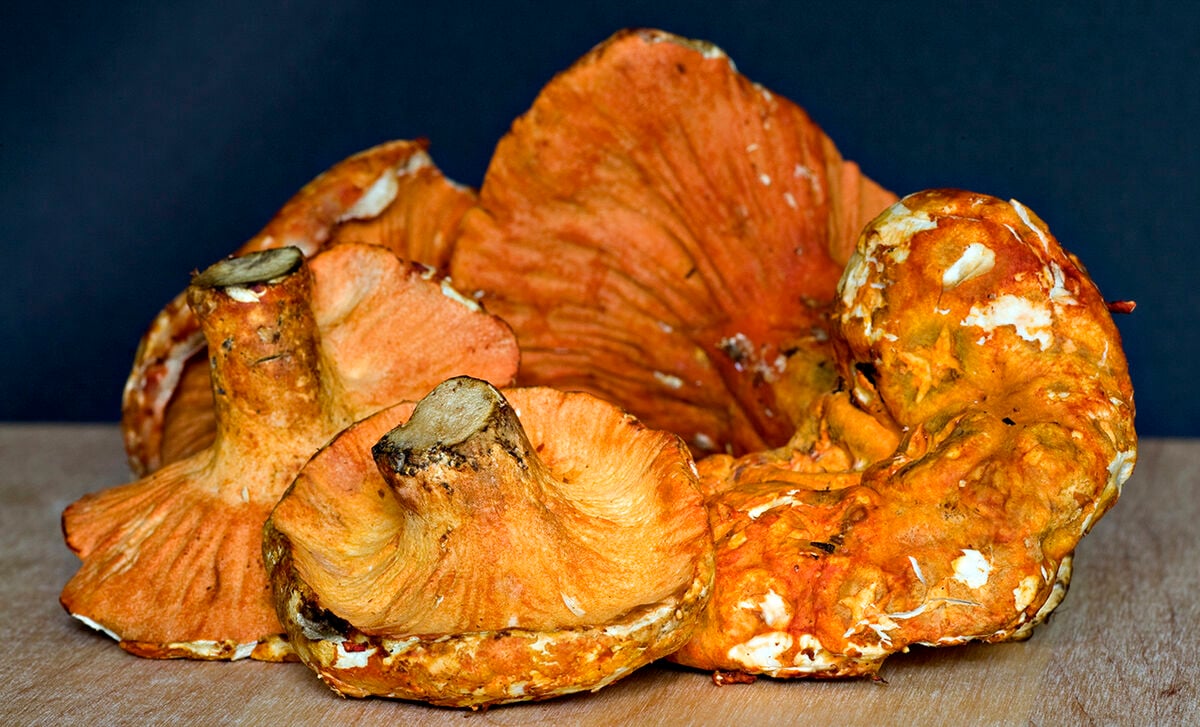
The attack of the red mold actually improves the taste of these mushrooms, neither of which is valued for its flavor. And the mold improves the texture of the Russula, which is very crumbly beforehand. Lobster mushroom is meaty and has a dense texture with a nutty, sweet smell reminiscent of steamed lobster. The lobster mushroom is found in the autumn in New England and on the West Coast, usually from late summer through October, under a variety of trees, most often hemlock. Anyplace that the exceedingly common Lactarius mushroom grows, the lobster mushroom might appear. They are very distinctive and noticeable.
How to Clean Lobster Mushrooms
Lobster mushrooms catch a lot of dirt in their cracks and concave caps, so cleaning them is not easy. Do not wash them with a damp cloth, which can be messy and may remove the distinctive coloring, but rather use a dry brush to wipe away the dirt. It might be necessary to break the mushrooms apart to get into all the crevices. Cut off any brown spots that might be on the surface. The lobster is a sturdy mushroom, so if you have very dirty ones, they can be quickly rinsed in very cold water.
How to Cook Lobster Mushrooms
Lobster mushrooms are highly variable in flavor. Fresh specimens with completely white flesh on the interior are the best tasting. Keep it simple. Pan-frying or sautéing is perfect for this dense mushroom, and the larger specimens benefit from moist cooking methods. The bright orange-red color of the mushroom leaches out as it cooks, leaving a colorful juice in the pan. In fact, lobster mushrooms can be used to dye wool, fabric, or paper. Be sure not to overcook this mushroom, as the flavor and aroma are delicate and can be lost. Some like to chop lobster mushrooms into regular chunks and tempura fry them. They are often used in seafood dishes—with actual lobster or crab, or bisque, the seafood aroma is enhanced.
